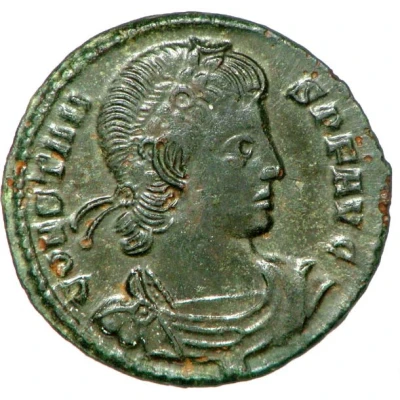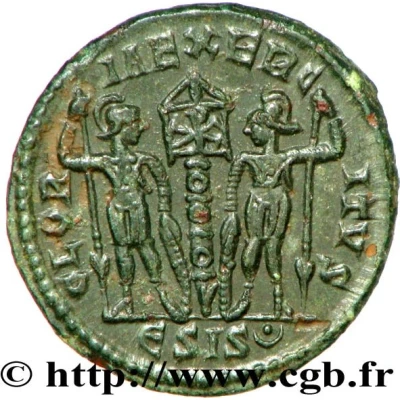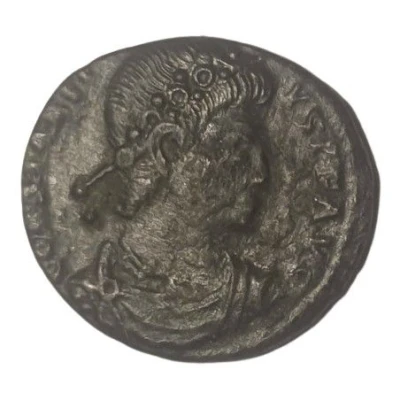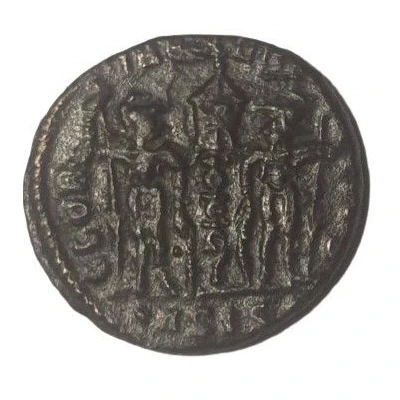


© CGB
Nummus - Constans GLORIA EXERCITVS; Siscia
| Bronze | 1.55 g | 15.84 mm |
| Issuer | Rome › Roman Empire (27 BC - 395 AD) |
|---|---|
| Emperor | Constantine II (337-340) |
| Type | Standard circulation coin |
| Years | 337-340 |
| Value | Nummus (1⁄7200) |
| Currency | Solidus, Reform of Constantine (AD 310/324 – 395) |
| Composition | Bronze |
| Weight | 1.55 g |
| Diameter | 15.84 mm |
| Shape | Round (irregular) |
| Technique | Hammered |
| Orientation | Variable alignment ↺ |
| Demonetized | Yes |
| Updated | 2024-10-04 |
| Numista | N#73201 |
|---|---|
| Rarity index | 73% |
Reverse
Two soldiers, helmeted, draped, cuirassed, facing front, heads toward each other, each holding inverted spear in outer hand and resting inner hand on shield; between them, a standard with Chi-Rho on banner.
Officina and mintmark in exergue followed by a dot on crescent.
Script: Latin
Lettering: GLOR-IA EXERC-ITVS
Comment
Type 3 ribbons with ball ends. On this example, the composite tiara appears to be laurelled and gem-set. Round gem-set cabochon. Fine pterygia under the paludamentumAfter Constantine's death, the use of the chrism became widespread in coinage, and the standard should be interpreted as a labarum adorned with the chrism or christogram, which is formed from khi and rhô, the first two Greek letters of Christ's name.
Interesting fact
One interesting fact about the Nummus - Constans coin is that it features the first Christian symbol, the Chi-Rho monogram, on its reverse side. This symbol, which combines the first two letters of the Greek word for Christ (Chi and Rho), was used by Emperor Constantine to mark his conversion to Christianity and to promote the new religion throughout the empire. The inclusion of this symbol on the coin reflects the significant religious and cultural changes that were taking place in the Roman Empire during the 4th century.

